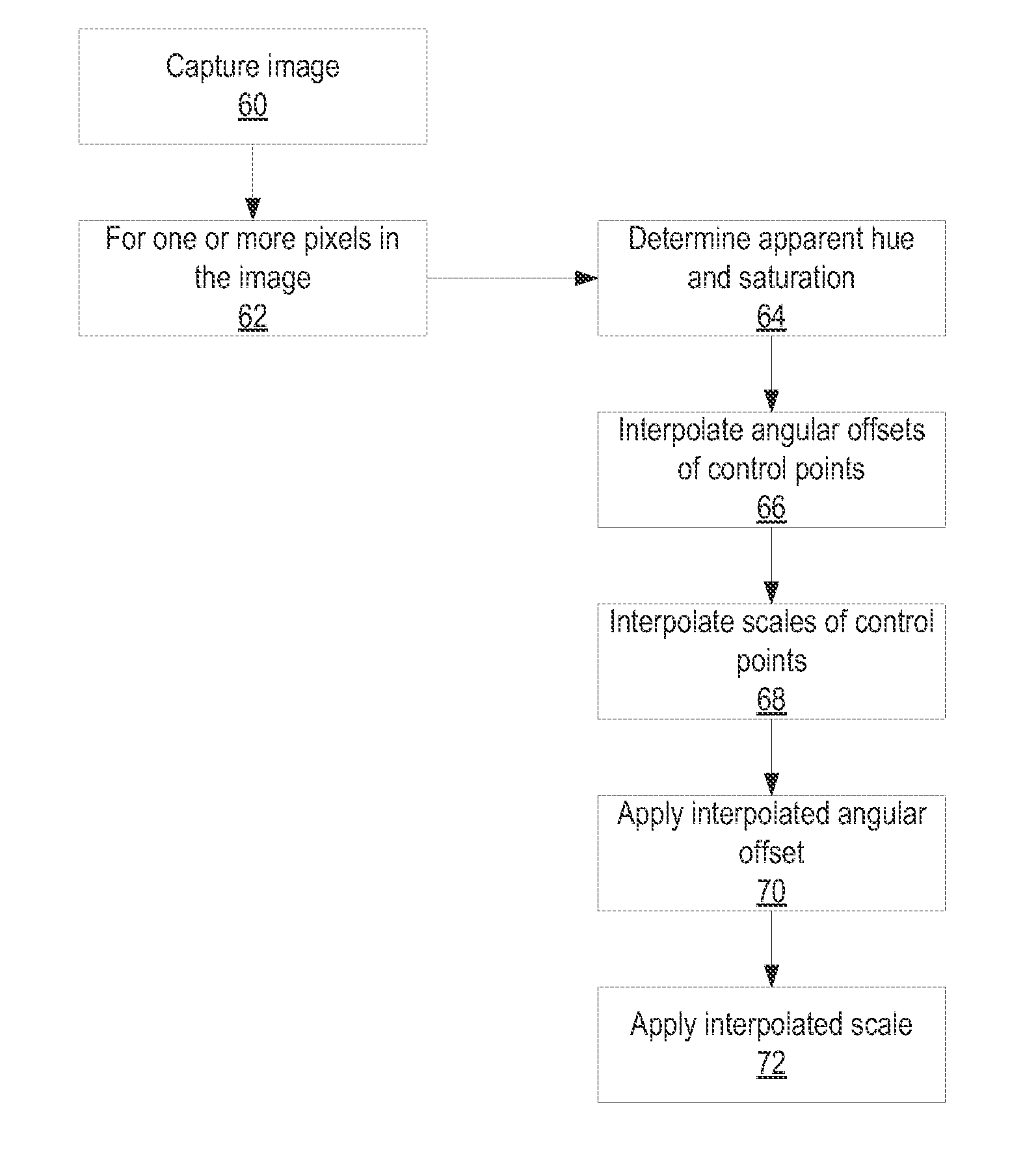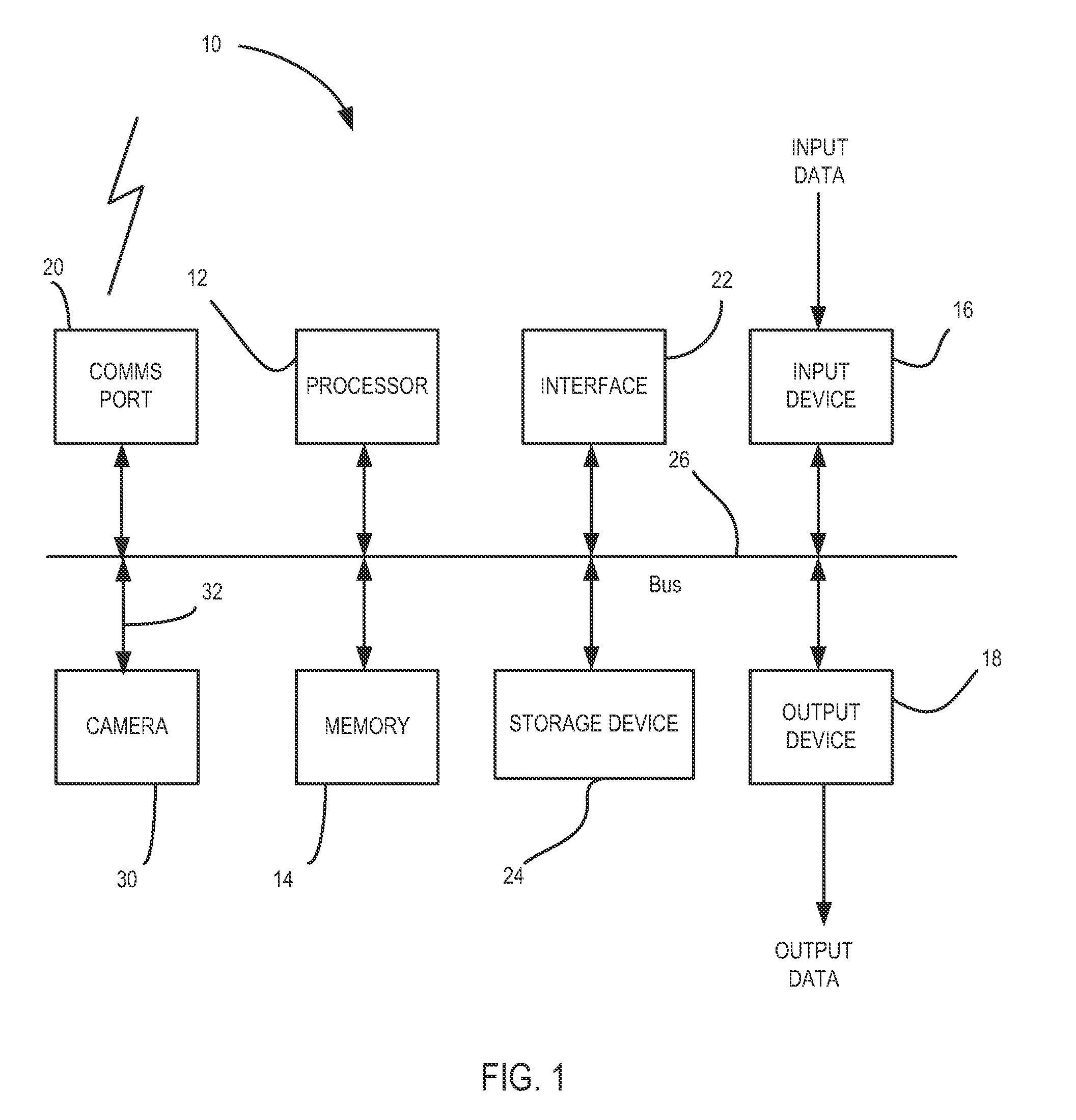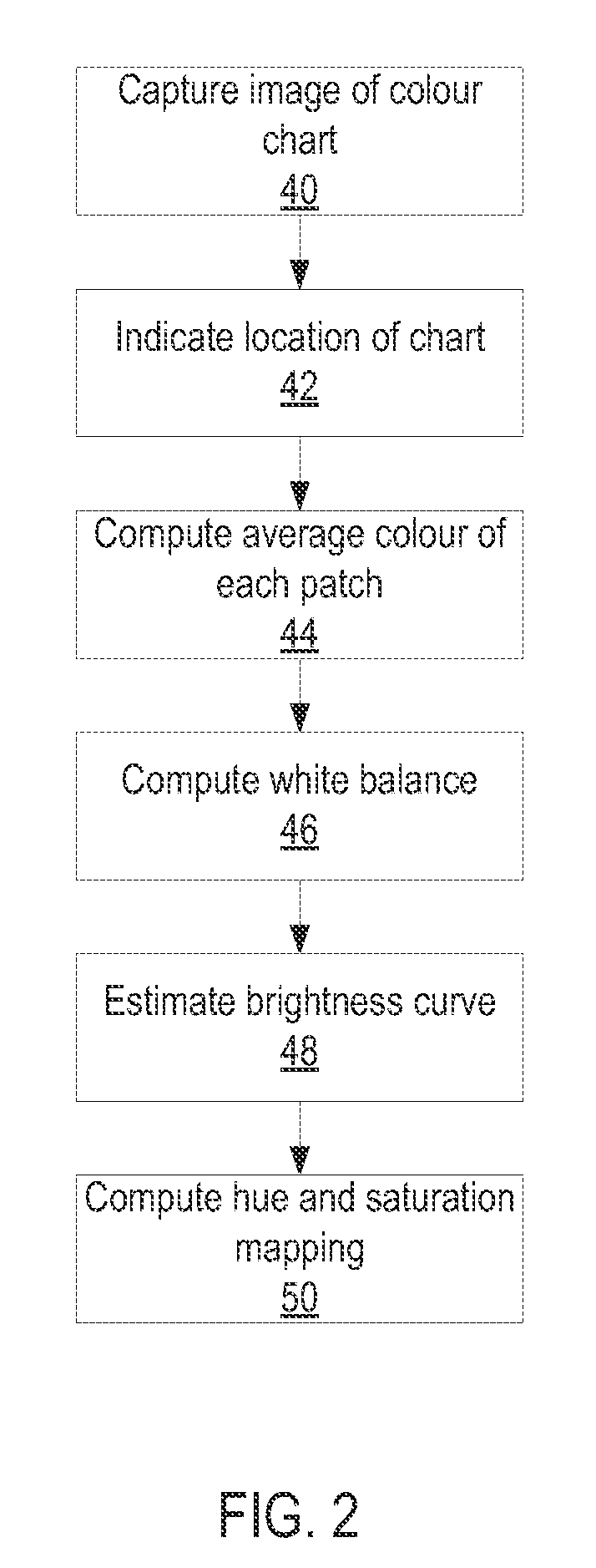Colour calibration method for an image capture device
a technology of image capture and calibration method, which is applied in the direction of optical radiation measurement, color signal processing circuit, instruments, etc., can solve the problems of difficult application of techniques, difficult process of computing such a transformation, and rare for the camera colour space to exactly match, so as to reduce the complexity of transformation and computation time
- Summary
- Abstract
- Description
- Claims
- Application Information
AI Technical Summary
Benefits of technology
Problems solved by technology
Method used
Image
Examples
Embodiment Construction
[0042]An example processing system and image capture device for use with embodiments of the invention will be described with reference to FIG. 1. The processing system 10 includes a processor 12, a memory 14, at least one input device 16, at least one output device 18, a communications port 20, an interface 22 and a storage device 24. As is shown, the components of the processing system 10 are coupled together via a bus or group of buses 26.
[0043]The processor 12 may include more than one processing device, for example to handle different functions within the processing system 10. The memory 14 may include any suitable memory device and including, for example, volatile or non-volatile memory, solid state storage devices, magnetic devices, etc. The memory 14 may store instructions for execution by the processor 12.
[0044]Input device 16 receives input data and may include, for example, a keyboard, a mouse or other pointer device, a trackball, joystick or touch-screen, a microphone, a ...
PUM
 Login to View More
Login to View More Abstract
Description
Claims
Application Information
 Login to View More
Login to View More - R&D
- Intellectual Property
- Life Sciences
- Materials
- Tech Scout
- Unparalleled Data Quality
- Higher Quality Content
- 60% Fewer Hallucinations
Browse by: Latest US Patents, China's latest patents, Technical Efficacy Thesaurus, Application Domain, Technology Topic, Popular Technical Reports.
© 2025 PatSnap. All rights reserved.Legal|Privacy policy|Modern Slavery Act Transparency Statement|Sitemap|About US| Contact US: help@patsnap.com



